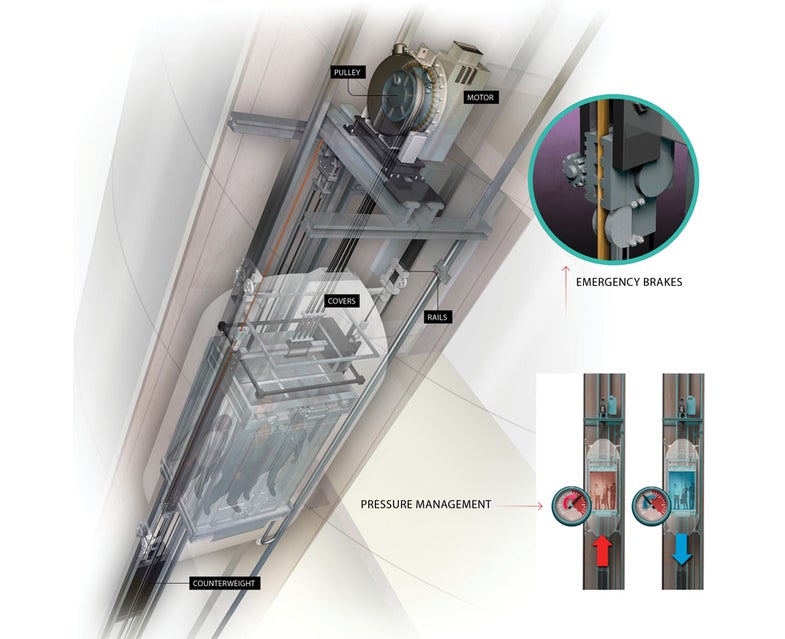How It Works: World’s Fastest Elevator
The first commercial passenger elevator, installed by Otis Elevator Company in 1857, climbed 40 feet a minute. The elevators that...

The first commercial passenger elevator, installed by Otis Elevator Company in 1857, climbed 40 feet a minute. The elevators that Mitsubishi Electric are installing in China’s 2,000-foot-tall Shanghai Tower travel 59 feet a second. When construction is complete in 2014, the elevators will whisk passengers straight from the basement-level entrance to the observation deck near the top of the tower, a 1,855-foot journey, in less than a minute.
MOTOR
Like Otis’s original elevator, the new Mitsubishi will move by way of a pulley. The car hangs from one end of a set of high-intensity steel cables, and a 13-ton counterweight hangs on the other. A 310-kilowatt motor at the top of the elevator shaft raises and lowers the car by turning the pulley.
BRAINS
A central computer determines when and in what order to dispatch elevators to pick up passengers. The goal is to minimize users’ wait time while preventing any two elevators from running side by side, which would produce wind noise and excess pressure in the shaft.
AERODYNAMICS
Aluminum covers at the top and bottom of the elevator car reduce air resistance and wind noise at high speeds.
VIBRATION DAMPING
Elevators travel on two sturdy steel rails, but they can still jiggle slightly at high speeds. The rollers that guide the elevator along the rails automatically counteract shaking. Accelerometers attached to the car sense when it sways slightly, and then electromagnetic actuators inside the rollers nudge the car minutely in the opposite direction.
PRESSURE MANAGEMENT
The rapid change in atmospheric pressure on the nonstop ride to the basement from the 119th floor can cause an uncomfortable pressure imbalance in passengers’ ears. A fan removes air from the descending car to precisely tune the pressure to mitigate this effect, which is not as pronounced on the way up.
EMERGENCY BRAKES
During normal operation, a disc brake stops the main pulley mechanism. But if the system detects a car that is moving too quickly, it triggers a mechanism at the base of the car to grip the rails, halting it within 50 feet. To protect against the 1,800ºF heat generated during an emergency stop, engineers coated the brakes with heat-resistant ceramic.
Check out the rest of this month’s How It Works features below.
- Underground Robot Library
- The World’s Fastest Elevator
- Firefighting Monster Truck
- Long-Range Nerf Rifle
- 175mph Electric Car
- Recycled-Air Scuba System
- Powered Gear Shifters
- Salmon Transport
- Dual-Blade Buzz Saw
- Twin-Power Turbocharger

World’s Fastest Elevator